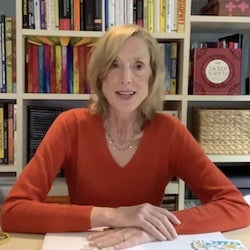While the global pandemic has made the Fall of 2020 seem ridden with uncertainty, it has also offered glimmers of hope and purpose. For the incoming students starting at the Harvard T.H. Chan School of Public Health, seeking to join the ranks of epidemiologists, policy professionals, and public health experts, their education began with “Foundations for Public Health,” an online course taught by CHDS Faculty Director Sue J. Goldie.
The genesis for an orientation course began when then-Dean Julio Frenk identified the need for a common public health foundation for all incoming graduate-level students and partnered with Goldie to conceptualize the core curriculum and develop the instructional materials over several months, ultimately teaching it together in 2015. Goldie expanded the course into a full online summer course in subsequent years.
Created with an eye towards innovative online pedagogy, the course includes four modules: (1) fundamental principles of population health, (2) health conditions and epidemiological trends, (3) equity and social determinants of health, and (4) responses from the health and non-health sector. The course “unpacks” the critical knowledge areas for public health professionals—including the burden of disease and global governance—and explores how students could apply these core concepts to better understand the rapid changes in public health in the present moment.
Characteristic of Dr. Goldie’s teaching style, the course’s inclusive virtual environment is supported with interactive “knowledge checks,” sketch-notes, conceptual diagrams, and resources curated from the GHELI digital repository and CHDS digital repository. Goldie finds that sketch drawings are a more effective method than simply talking about a concept. “We learn more effectively from words and images than from words alone,” she explains. “We have separate channels in our brains for visual and verbal information, and both have limits on how much can be processed at one time.” She says conceptual diagrams help students organize material into a coherent structure, while the process of drawing allows for information to be presented piece by piece, avoiding what is referred to as “cognitive overload,” which can impede learning. Goldie credits the CHDS Media Hub for integrating cognitivist multimedia design principles into educational videos – many of the methods used emerge from techniques developed over a 3-year period as RDS 202, Harvard’s first online course in decision science, was produced.
More about the CHDS Media Hub
Learn more about multimedia innovation by visiting the CHDS Media Hub, led by Jake Waxman, CHDS’ experimental digital environment to explore, experiment, and prototype creative multimedia approaches for teaching, learning about, and communicating decision science.
Related news: Sue J. Goldie Receives Excellence in Teaching Award
Related news: Sue J. Goldie on Teaching During COVID-19
